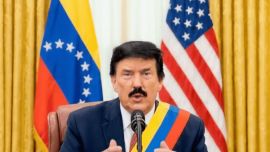The social damage caused by the coronavirus pandemic as laid bare on Wednesday, when the INDEC national statistics bureau revealed that poverty in Argentina rose to 40.9 percent in the first half of the year.
According to official data, the rate jumped by 5.4 points compared to the same period the previous year, with just over two-fifths of Argentines – or more than 18 million people – now considered poor.
It’s the highest officially recorded rate since 2004, when poverty reached 44.3 percent of the population.
Extreme poverty now affects 10.5 percent of the population, around 4.5 million, according to INDEC. That’s a rise of 2.8 points year-on-year.
At the end of 2019 the poverty rate was 35.5 percent, with eight percent of Argentines considered destitute.
INDEC said that 30.4 percent of all households were considered below the poverty line, a rise of five percent from the previous year.
The figures will spark renewed concern in the Casa Rosada over the deep impact of Argentina’s economic turmoil. The country was already in the grip of a two-year recession when President Alberto Fernández ordered a nationwide lockdown on March 20 to tackle the spread of Covid-19, all but shutting down the nation’s economy.
Though restrictions have been relaxed significantly in many provinces and most businesses are now back operating (albeit under strict sanitary protocols), social distancing measures remain in place.
Social Development Minister Daniel Arroyo admitted Wednesday that "the numbers are alarming," though he said structural poverty – the result of the successive economic crises that have hit Argentina in recent decades – also played a part in the high figure.
In an interview with the TN news channel, Arroyo also observed that "the second quarter, April, May and June,” had been the time of “the greatest closure of activities" due to the lockdown.
Argentina, currently recording an annual inflation rate of around 40 percent, has been in recession since 2018. The Covid-19 pandemic has hit its economy hard and most private forecasts expect a contraction of more than 12 percent this year.
‘Very worrying’
Experts highlighted the rise in those living in extreme poverty – those whose income is not enough to cover a basic food basket – and the impact on Argentina’s youngest citizens.
"Little by little, half of the population is approaching a position that is not enough to cover a basic essential consumption basket with their income. This is very worrying because it affects a very high percentage of children and adolescents," said economist Ricardo Aronskind.
According to INDEC, 56.3 percent of people aged from 0 to 14 years old are living in poverty. Among those aged 15 to 29, 49.6 percent are considered poor, with the figure falling to 36.2 percent for those aged 30 to 64.
The most impoverished city in the country is Concordia, in Entre Ríos Province, where 52.2 percent are considered poor. In Greater Buenos Aires, poverty reached 41.6 percent (up from 34.8 percent a year ago), rising to 47.5 percent in solely the Conurbano. In the capital, poverty stands at 17.3 percent, a rise of three points year-on-year.
"It is a situation very similar to what we experienced in 2001 and 2002," when Argentina experienced its worst crisis,” said Aronskind.
INDEC bases its data on the income a typical family needs to access a total basic food basket (or CBT), which includes additional measurements such as healthcare and education. The report, which studies data from 31 urban areas nationwide and projects that data nationwide, said that a family needed 43,785 Argentine pesos (US$547) to cover the CBT in the first half of 2020, adding that the average income of poor households during the same period was in reality just 25,759 pesos (US$321), a gap of 41.2 percent.
Aid and recovery
Arroyo said the government was doing what it could to help out those struggling, highlighting that the rate would have been higher if the government had not disbursed 420 billion pesos (around US$5.2 billion) in social support programmes during the coronavirus pandemic.
In a report issued after INDEC’s data was announced, the Ecolatina consultancy firm warned that fixing poverty would not be a quick fix.
"The rebound in the economy after the April floor seems to have been diluted, the health situation is far from being controlled (especially in the interior of the country) and the growing exchange market risks hamper the economy’s recovery," it said.
In an interview with RePerfilAr on Thursday, the director of the Catholic University of Argentina's (UCA) Social Debt Observatory unit, Agustín Salvia, said that the worst element of the ongoing crisis was the loss of 20 percent of jobs since the outbreak of Covid-19.
Salvia said while social aid packages had “generated a protective floor that made the situation no more serious than the one we have observed,” they had not “necessarily prevented an increase in indigence and poverty.”
"The way out of poverty will depend on an eventual economic recovery,” he said.
"Public policies are already being made to alleviate the problem, but it will require a very great effort to reverse poverty,” agreed Aronskind.
“The government will have to make two types of policies: a strong stimulus for production, especially for activities that create a lot of employment, and direct transfers of income to the population."
– TIMES/AFP/AP


























Comments